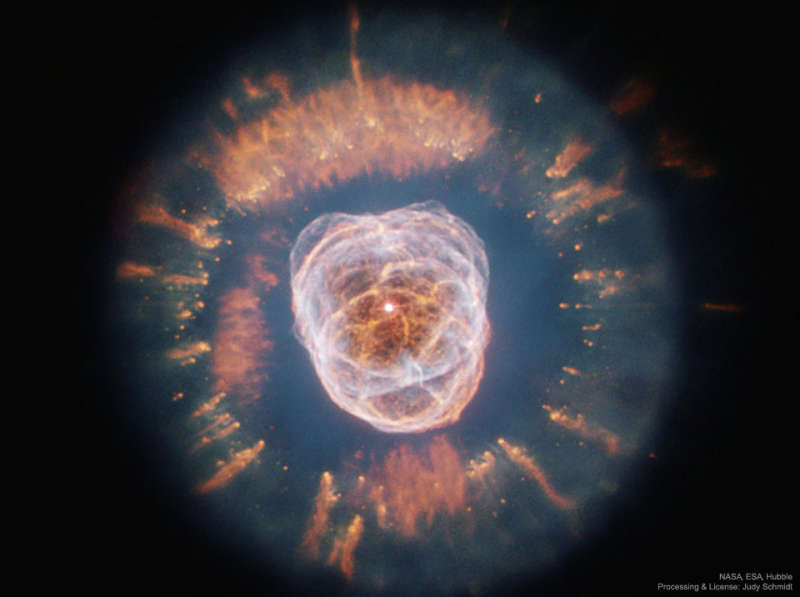NGC 2392: Double Shelled Planetary Nebula

Explanation:
To some, this huge nebula resembles a person's head
surrounded by a parka hood.
In 1787, astronomer
William Herschel discovered
this unusual planetary nebula:
NGC 2392.
More recently, the
Hubble Space Telescope imaged
the nebula in
visible light, while the nebula was also
imaged in X-rays
by the Chandra X-ray Observatory.
The featured combined visible-X ray image, shows
X-rays emitted by
central hot gas in pink.
The
nebula displays gas clouds so complex they are
not fully understood.
NGC 2392 is a double-shelled
planetary nebula, with the more distant gas having composed the
outer layers of a
Sun-like star only 10,000 years ago.
The outer shell contains unusual
light-year long orange filaments.
The inner filaments visible are being ejected by strong
wind of particles from the central star.
The NGC 2392
Nebula spans about 1/3 of a light year and lies in our
Milky Way Galaxy,
about 3,000 light years distant, toward the constellation of the Twins
(Gemini).
Authors & editors:
Robert Nemiroff
(MTU) &
Jerry Bonnell
(USRA)
NASA Web Site Statements, Warnings,
and Disclaimers
NASA Official: Jay Norris.
Specific
rights apply.
A service of:
LHEA at
NASA /
GSFC
& Michigan Tech. U.

